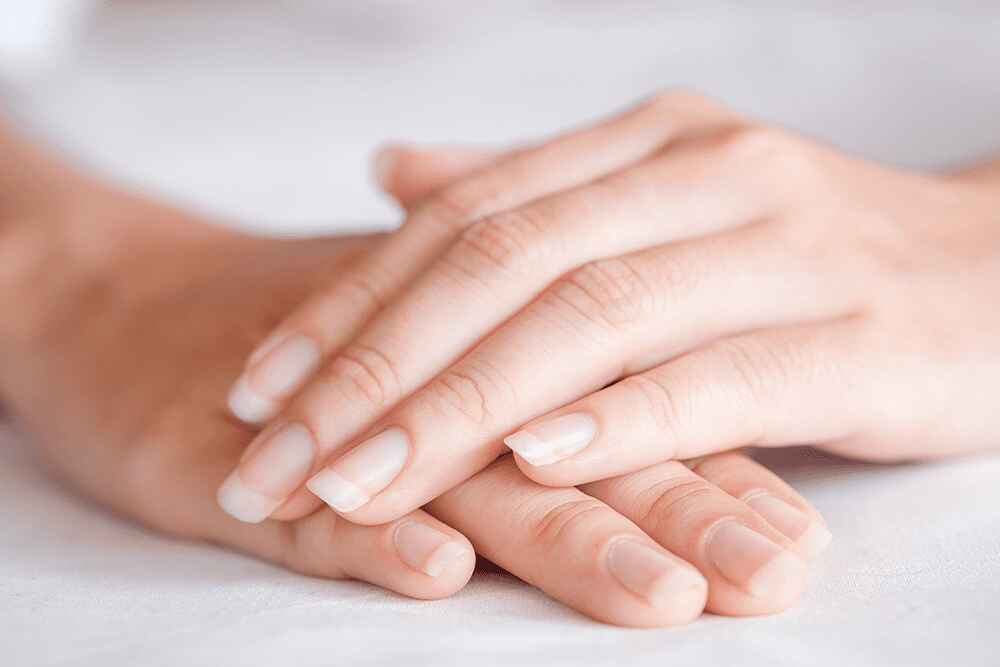
What Your Nails Are Saying About Your Health
A little-known fact about the human body is that it will sometimes use your fingernails and toenails to reveal health concerns. Nail health and appearance can go far beyond common nail irritations and fungal infections, indicating a number of health issues and nutritional disorders.
Healthy Nail Anatomy
Fingernails and toenails each contain specific parts that aid nail growth and can reveal issues in a person’s nails or body.
- Nail Plate: The most recognizable part of the nail is the hard exterior nail plate. The surface of the nail plate is smooth, with small ridges that run down the nail. It is held to the finger by the nail bed.
- Nail Matrix: Often confused with the nail bed, the nail matrix is located deep under the nail plate and serves as a root piece of the nail. The nail matrix is recognizable through the nail plate as a half-moon shape toward the top of the nail called the lunula (although the lunula is not visible in all nails). The nail matrix forms the hard nail plate that grows outward away from the nail matrix.
- Nail Bed: The nail bed attaches the nail plate to the nail matrix and finger by forming the longitudinal ridges that run down the nail. The ridges of the nail bed fit together like a puzzle with the ridges of the nail plate, reinforcing their bond. If for some reason the nail plate is removed, the nail bed will lose its ridges and stimulate keratins to help the nail matrix grow the nail back.
- Cuticle: The cuticle grows from the nail bed and helps create the complementary longitudinal lines that connect with the nail plate. The cuticle also helps protect the nail matrix from any irritants.
- Hyponychium: The hyponychium is where the nail bed ends, and the skin begins. It is covered by the free edge of the nail plate.
- Onychodermal Band: This is the part of the nail bed that displays bright colors that show where the nail bed begins and ends. This part of the nail can signal nail health issues and reveal what’s going on under the nail plate.
- Nail Folds: The nail folds are soft edges of skin that help protect the edges of the nail plate. They also protect the nail matrix from external harm that can threaten the growth of the nail.
- Mantle: This is the main piece of skin that covers the nail matrix and connects to the nail folds.
Nails also have blood, bone proteins, and nerves that combine to create them. These run through the hand and fingers to surround and encapsulate all parts of the nail.
Problems With Nail Health
Human embryos begin to form nails and nail beds approximately eight weeks after gestation and have recognizable nails after five months. Nails can begin showing different health issues in the body soon after birth.
According to a study published in the Indian Dermatology Online Journal, the nail is a literal window to systemic disease, consistently displaying abnormalities that mirror problems within the body.
Common nail health issues include:
- Koilonychia: The curving inward or spooning of the nail plate and nail bed, often to the point where it can hold a drop of water. Koilonychia can happen naturally with age, softening of the nail, or iron deficiency, but it can also signify malnutrition, pulmonary disease, psoriasis, or anemia.
- Clubbing: Clubbing eliminates the diamond pattern (known as Schmaroth’s window) that can be seen when opposite fingernails are held together. In extreme cases, clubbing can be an early signal of HIV or AIDS.
- Dolichonychia: Extremely long and fast-growing nails that are not caused by grooming habits can signify pituitary gland problems.
- Parrot Beak Nail: The tip of the nail curves down into the skin, resembling a parrot’s beak, which can signify acrosclerosis.
Other superficial nail issues include pterygium, longitudinal ridging, Beau’s lines, trachyonychia (nail pitting), leukonychia, melanonychia, and many more. Click here for more information about nail abnormalities and their associated diseases.
Achieving Nail Health
If you have any issues with your nails, talk to your doctor about your nail health and if you need testing to determine what your nail issues mean. Always avoid biting your nails, and if you accidentally slam your fingers and lose a nail, never fear — your nail matrix will work hard to grow it back.
Nail health can reveal a lot of other health issues. For many who struggle with addiction, your nails can be the window to identifying malnutrition, poor liver health, bone issues, or other dangerous and deadly diseases. Though nail health is important, it does not need to be obsessed over. Talk to your doctor if your mental health is being negatively impacted by concerns about the appearance of your nails. If your nail health or any other aspect of your physical and mental health is being impaired by past or current addiction, RECO Intensive can help. At RECO Intensive, we understand that your health and sobriety are equally important. Our specialized staff and experienced alumni can guide you through strategies for healthy living, positive thinking, sobriety, and addiction RECOvery. Our services include addiction treatment, mental health treatment, personalized care, specialty services, and a myriad of therapeutic styles. At RECO Intensive, we want to help you on your journey to RECOvery. Call RECO Intensive today at (561) 464-6533, and let’s get back to a brighter future.